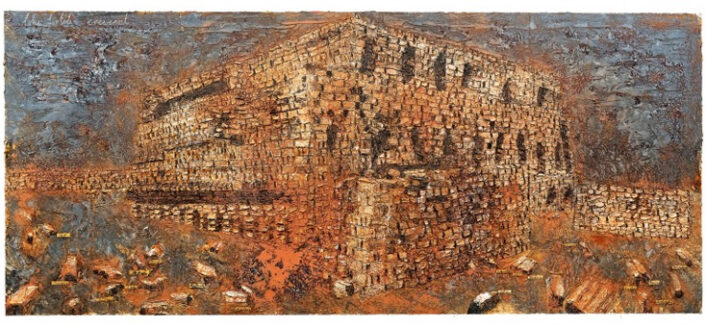Fine Art
It was a busy year for Anselm Kiefer
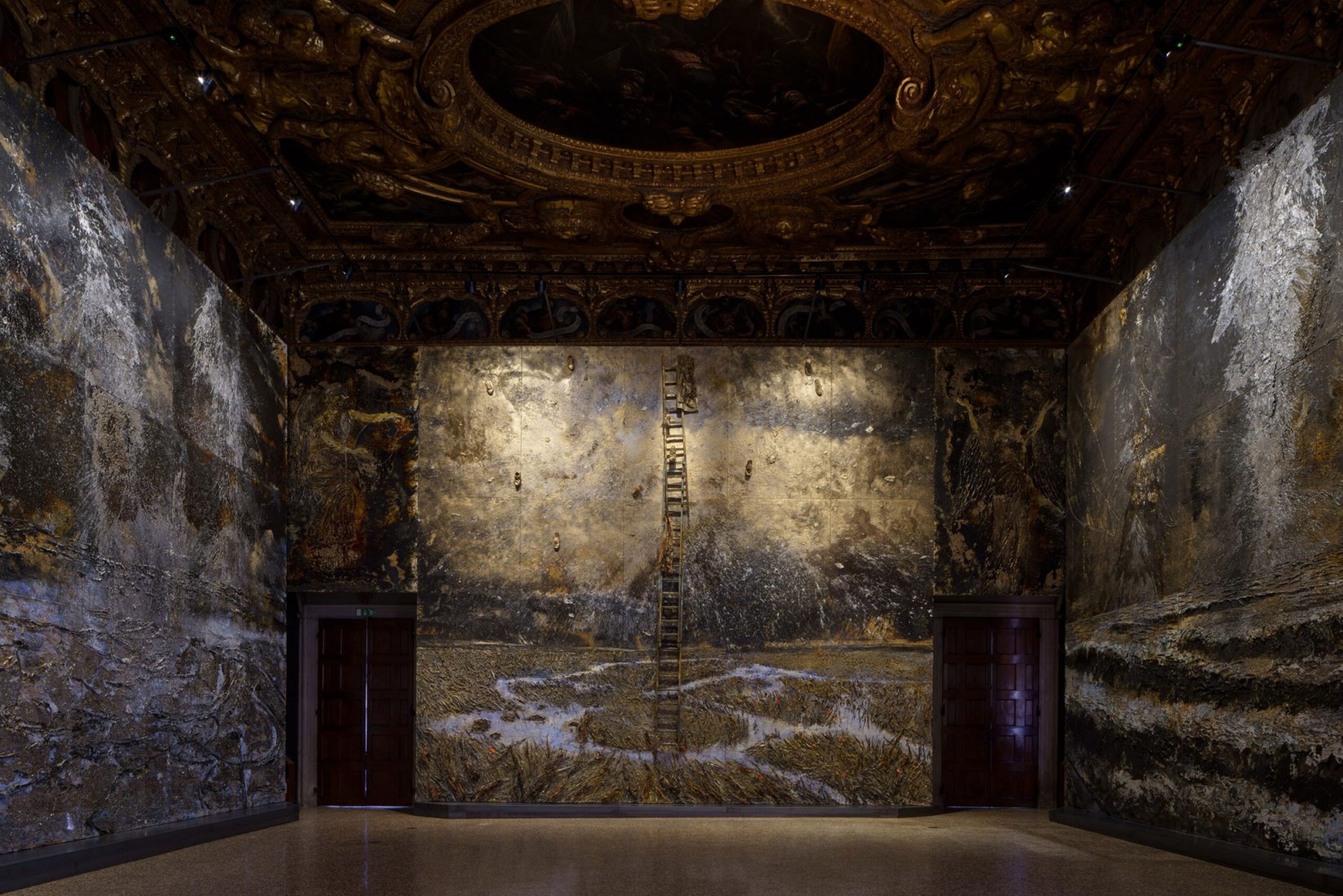
In 2019, Kiefer was asked to participate in the 2022 Venice Biennial, an especially significant biennale because it marked the city’s 1,600th anniversary. Kiefer’s “Sala dello Scrutinio” at the Doge Palace is comprised of three monumental canvases on the ceiling and a number of paintings created in 2020 and 2021 that refer to a common theme for Kiefer, the ephemeral.
Image courtesy of: Metalocus
2022 was an especially fruitful year for Anselm Kiefer. With a fabulous exhibition at New York City’s Gagosian Gallery, a commission by France’s President Emmanuel Macron for the Pantheon, and a large-scale, 70 piece installation at his former home at La Ribaute in southern France, and a display of mammoth paintings at Doge Palace in Venice for the city’s Biennale.
To fully understand Kiefer’s work, it is important to understand his background. The German artist was born during the last months of World War II and grew up in the devastation that followed the war’s end. The son of an art teacher, Kiefer’s work often addresses the past, especially themes from Nazi rule. The artist also commonly refers to controversial issues from recent history. Kiefer’s somber works are also inspired by different traditions including Egyptian mythology, biblical stories, today’s astronomy, and Jewish mysticism.
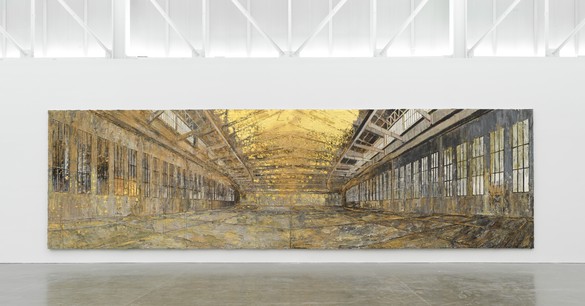
Danaë on view at Gagosian Gallery towards the end of 2022. The piece is made from acrylic, oil, emulsion, gold leaf, wire, metal, and coal on canvas.
Dimensions are: 12.5″ x 43″ x 8.5″
Image courtesy of: Gagosian Gallery, photographed by: George Poncet
“Exodus” was a simultaneous exhibition of new work at both the New York and the Los Angeles’ Gagosian Gallery. The large-scale paintings use a wide range of materials that include paint, fabric, terra-cotta, wire, found objects, and metal. It is Kiefer’s distinct interpretation of history, literature, and mythology that are common themes in his work. He frequently incorporates Hebrew inscriptions from the Book of Exodus to offer viewers an opportunity to find commonality between differing traditions.
Anchoring the exhibition is “Danaë,” a representation of Berlin’s Templehof Airport with Zeus transfigured into a shower of gold. It is thought that the site is where the knights Templar built edifices during the Middle Ages; however the location became an airport in 1923. The airport was used exclusively by the Third Reich during World War II and it played an important part during the Cold War. Ironically, the empty building was recently used as a temporary shelter for refugees… thus, the theme of Exodus holds true.
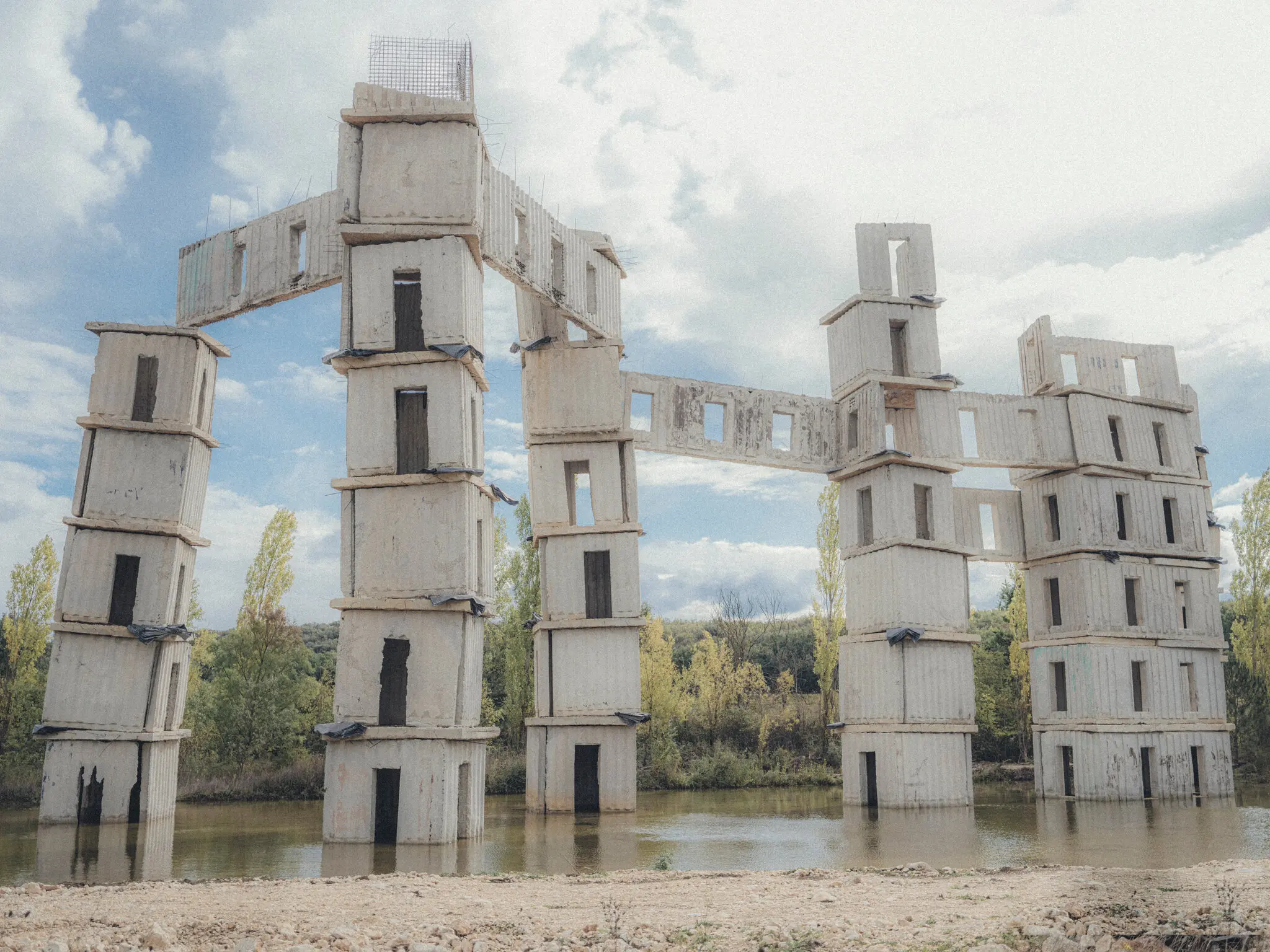
Kiefer’s property in southern France has been likened to a “human ant hill.” Since last year, it is open to the public, seasonally.
Image courtesy of: The New York Times, photographed by: Julien Mignot
At his storied estate in southern France, Kiefer put together an installation called “Seven Deadly Palaces.” The labyrinth created at La Ribaute was actually a former silk factory where Kiefer lived with his family from 1992 to 2007. The property spans 100 acres and is connected by footbridges and underground passageways.
The gravity-defying installation is made from leaning towers assembled of discarded ship containers. Kiefer believes that his relationship with landscape is a direct correlation to the devastation he encountered as a child in Germany. He says (courtesy of The New York Times), “there is no innocent landscape.” When Kiefer acquired La Ribaute, the site was comprised of outdoor art installations, subterranean chambers, and a five-level concrete amphitheater. Over time, the property has grown to more than sixty buildings and art areas that are called pavilions. Kiefer added sculptures and art in these spaces and in recent years, Janne Sirén, president of the Eschaton-Anselm Kiefer Foundation said, “In recent years, he has welcomed artists he feels kinship with to contribute permanent installations to the ecosystem of La Ribaute, starting with Wolfgang Laib in 2014.”

Kiefer’s installation inside Doge Palace.
Image courtesy of: The Wall Street Journal
Last summer’s project in Venice was truly one of Kiefer’s most astonishing works. The location of the iconic Palazzo Ducale was relevant because it was formerly the Doge residence and seat of the Venetian government; as such, it has always been seen as the very symbol of Venice. The exhibition enabled Kiefer to reimagine Venice’s long and storied history, including the devastating fire that ravaged the city in 1577.
Kiefer depicts several iconic Venetian architectural sites in his paintings. In particular, Piazza San Marco is shown engulfed in flames. Courtesy of ArtNews, the show’s curator and director of the Fondazione Musei Civici di Venezia said, “Kiefer’s work arises from the past, from the fire which erased its memory, and out of the destruction caused new ones to grow.”
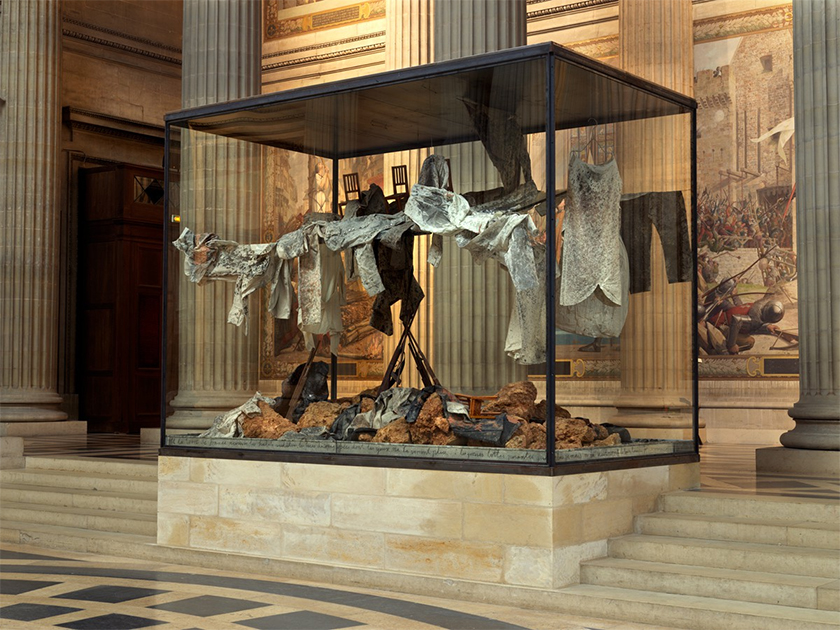
“Qu’est-ce que nous sommes. . . ,” 2020. A view of the Pantheon installation.
Image courtesy of: Gagosian Gallery, photographed by: Georges Poncet
Kiefer’s 2020 project in France was instrumental in showcasing his interest in “the unity of Europe and the constant exchange between cultures.” With his foundation’s headquarters in Austria, his birthplace in Germany, and his residence in France, Kiefer is truly a European ambassador.
In 2020, President Emmanuel Macron of France commissioned the artist to produce a work that would commemorate Maurice Genevoix, the French writer and World War I soldier. The installation would be the first new, permanent work for Paris’ Pantheon in almost one hundred years. Prior to the ceremony, Genevoix’s coffin was moved to the Pantheon as France prepared to mark the symbolic burial of the Unnamed Soldier under the Arc de Triomphe on Remembrance Day.
Kiefer produced six glass-and-steel vitrines that feature selections from Genevoix’s works. Inside the vitrines, Kiefer inserted (courtesy of The Art Newspaper), “a field of poppies, clothes splattered with mud, stones, ruins and rusty barbed wire, ‘perhaps recall reliquaries but they don’t contain anything precious'”. In addition, Kiefer added two enormous paintings that were inspired by World War One. Kiefer poignantly described the reasoning behind his work, “I didn’t want to make a monument but rather […] dwell on tragic moments through transforming them. […] History, as it feels to me, seems to signify that war and evil are not only inevitable but the condition of man. Man is capable of everything, that’s my affliction, but what can I, a pessimistic artist, do faced with the course of the world’s history.”
